Claymation, the art of using plasticine-like figures and stop motion photography, has a venerable tradition, and in this age of slick CGI effects, it has an old world charm that can be used to good effect. In Mary and Max, Australian director Adam Elliot’s first venture into feature film directing, it proves a powerful expressive medium used to present a modern fable about finding a soul mate in a bleak world where the simplest communication is fraught with danger.
Mary and Max is about two lonely people. One, Mary, is a dumpy and unattractive child living in suburban Australia with her alcoholic mother and a father who fulfils some inner urge by engaging in taxidermy in the garden shed, and the other is an obese, middle-aged New York Jew with Asperger’s syndrome. It hardly needs to be added that while there is a lot of tenderness and charm to Mary and Max, it is not particularly a film for children.
Much of the story is told in a voice-over by the narrator, a part performed admirably by comedian Barry Humphries, who in restraining his Dame Edna and Sir Les Patterson personae, proves himself an evocative reader who creates the baseline melody of Elliot’s film. The melody is an adagio, with bursts of antic humor and many stretches of a wry, wistful delight in the absurdity that we can find in the world around us, and also within ourselves.
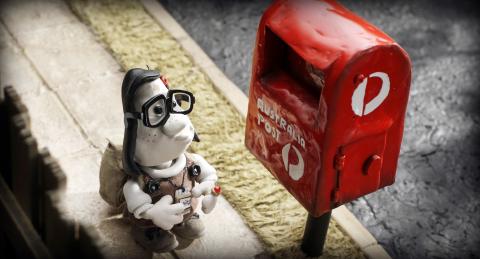
Photo courtesy of Atom Cinema
The film is full of clever writing, as befits a story of friendship conducted through the post. There are whimsical throw-away lines as when Max asks Mary: “Do you have a favorite-sounding word? My top-five are ‘ointment,’ ‘bumblebee,’ ‘Vladivostok,’ ‘banana,’ and ‘testicle.’” Read by Philip Seymour Hoffman, this has the cadences of a poem. In describing the tentative beginning of a pen pal friendship between Mary and Max, the narrator describes Max’s feelings: “Max hoped Mary would write again. He’d always wanted a friend. A friend that wasn’t invisible, a pet or rubber figurine.” In the course of the film Max has an imaginary friend, who commits suicide, a succession of fish named Henry that contrive to die in unhappy circumstances, and a collection of plastic cartoon figures from a cartoon show called The Noblets.
Mary has a birthmark on her forehead “the color of poo.” Her favorite color is brown, and the world around her is rendered in sepia with sudden, almost indecent splashes of color. Max’s world is all shades of gray. Despite this very restricted palette, Elliot manages to give the characters and their surrounds an enormously commanding presence. Mary, voiced as a child by Bethany Whitmore, is lost, ignorant and desperate, but also enormously sympathetic. We feel for her painfully in the off-and-on relationship she has with Max, who finds that her letters, full of questions about were babies come from (“In Australia, they are found at the bottom of beer glasses,” she tells him), about love, and why people bully other people, spark panic attacks that he only gradually learns to control.
For a film that so resolutely focuses on the dark side of human existence, Mary and Max is surprisingly funny. This ability to laugh through the tears, without diminishing the hurt, is one of the great accomplishments of the film, and keeps it firmly away from becoming sentimental or aspirational. It will also probably keep it firmly out of mainstream cinema.
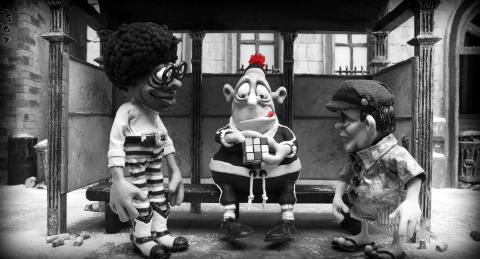
Photo courtesy of Atom Cinema
The process of stop-motion claymation is extremely laborious, but it allows Elliot to make each frame into a marvelously evocative picture, something that CGI effects, with their emphasis on real-seeming action, does not encourage.
Although a small production that in many countries has gone directly to video, Mary and Max has some great voice talent, a creative spark and a sympathetic soul that make its release on the big screen here something to be heartily welcomed.
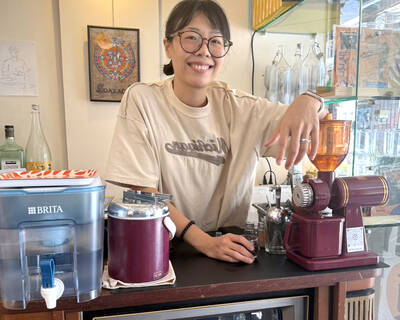
Cheng Ching-hsiang (鄭青祥) turned a small triangle of concrete jammed between two old shops into a cool little bar called 9dimension. In front of the shop, a steampunk-like structure was welded by himself to serve as a booth where he prepares cocktails. “Yancheng used to be just old people,” he says, “but now young people are coming and creating the New Yancheng.” Around the corner, Yu Hsiu-jao (饒毓琇), opened Tiny Cafe. True to its name, it is the size of a cupboard and serves cold-brewed coffee. “Small shops are so special and have personality,” she says, “people come to Yancheng to find such treasures.” She

The low voter turnout for the referendum on Aug. 23 shows that many Taiwanese are apathetic about nuclear energy, but there are long-term energy stakes involved that the public needs to grasp Taiwan faces an energy trilemma: soaring AI-driven demand, pressure to cut carbon and reliance on fragile fuel imports. But the nuclear referendum on Aug. 23 showed how little this registered with voters, many of whom neither see the long game nor grasp the stakes. Volunteer referendum worker Vivian Chen (陳薇安) put it bluntly: “I’ve seen many people asking what they’re voting for when they arrive to vote. They cast their vote without even doing any research.” Imagine Taiwanese voters invited to a poker table. The bet looked simple — yes or no — yet most never showed. More than two-thirds of those
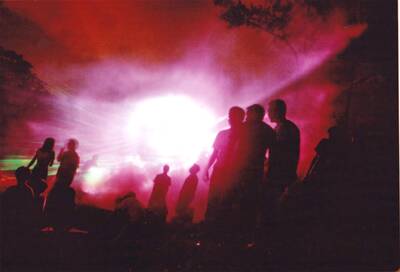
In July of 1995, a group of local DJs began posting an event flyer around Taipei. It was cheaply photocopied and nearly all in English, with a hand-drawn map on the back and, on the front, a big red hand print alongside one prominent line of text, “Finally… THE PARTY.” The map led to a remote floodplain in Taipei County (now New Taipei City) just across the Tamsui River from Taipei. The organizers got permission from no one. They just drove up in a blue Taiwanese pickup truck, set up a generator, two speakers, two turntables and a mixer. They
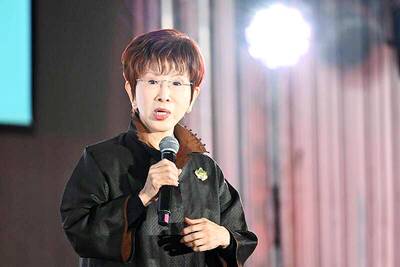
Former Chinese Nationalist Party (KMT) chairwoman Hung Hsiu-chu’s (洪秀柱) attendance at the Chinese Communist Party’s (CPP) “Chinese People’s War of Resistance Against Japanese Aggression and the World Anti-Fascist War” parade in Beijing is infuriating, embarrassing and insulting to nearly everyone in Taiwan, and Taiwan’s friends and allies. She is also ripping off bandages and pouring salt into old wounds. In the process she managed to tie both the KMT and the Democratic Progressive Party (DPP) into uncomfortable knots. The KMT continues to honor their heroic fighters, who defended China against the invading Japanese Empire, which inflicted unimaginable horrors on the